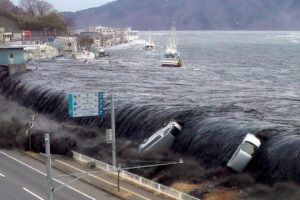
Volcano Eruption, Natural Disaster: The Power and Beauty of Nature Unleashed
In 2024, the world was reminded of the incredible power and beauty of nature through a spectacular volcanic eruption. This natural disaster not only demonstrated the raw force of the Earth but also provided stunning visuals that captured the imagination of people worldwide. This article explores the details of the eruption, its impacts, and the captivating moments that were caught on camera.
The Mighty Power of Volcanoes
Volcanoes are one of nature’s most formidable forces. These openings in the Earth’s crust allow molten rock, volcanic ash, and gases to escape from below the surface. When a volcano erupts, it can cause widespread destruction but also create new landforms, enrich soils, and influence the global climate. The 2024 eruption served as a powerful reminder of both the destructive and creative forces of volcanic activity.
The 2024 Eruption: An Overview
The 2024 eruption occurred in the Pacific Ring of Fire, a region known for its high volcanic activity. Classified as a major event, it had a Volcanic Explosivity Index (VEI) of 6, making it one of the most significant eruptions in recent history. The eruption began with a series of powerful explosions that sent ash plumes high into the sky, followed by rivers of lava cascading down the volcano’s slopes.
Capturing the Eruption: The Role of Modern Technology
Modern technology played a critical role in documenting the 2024 eruption. High-definition cameras, drones, and satellite imagery provided unprecedented views of the event. These technologies allowed scientists to study the eruption in real-time and helped the public appreciate the scale and power of this natural disaster.
Drone Footage
Drones equipped with high-resolution cameras captured breathtaking footage of the eruption from close range. These aerial views showcased the lava fountains, ash clouds, and pyroclastic flows in incredible detail. The footage also provided valuable data for scientists, aiding their understanding of the eruption’s dynamics and potential impacts on surrounding areas.
Satellite Imagery
Satellite images provided a unique perspective of the eruption from space. These images depicted the vast ash plume spreading over thousands of miles, affecting air travel and weather patterns. The satellite data also helped monitor the volcano’s activity and predict future eruptions.
Ground-Based Cameras
Ground-based cameras offered up-close views of the eruption, capturing the intense heat and destructive power of the lava flows. Strategically placed around the volcano, these cameras documented different aspects of the eruption, from the initial explosions to the aftermath.
The Impact of the Eruption
The 2024 eruption had significant impacts on the local environment and communities. The immediate area around the volcano was devastated by lava flows, ashfall, and pyroclastic flows. The eruption also caused widespread disruption to air travel, with flights being canceled or rerouted due to the ash plume. Additionally, the eruption had a temporary cooling effect on the global climate due to the large amount of sulfur dioxide released into the atmosphere.
Environmental Impact
The eruption caused extensive damage to the local ecosystem. Forests and vegetation were destroyed by the lava flows, and ashfall contaminated water sources. However, volcanic eruptions can also create new habitats and enrich the soil with minerals, promoting new plant growth in the long term.
Human Impact
Thousands of people were forced to evacuate their homes and seek shelter in temporary accommodations. Emergency services and aid organizations worked tirelessly to provide support and assistance to those affected. The eruption highlighted the importance of disaster preparedness and the need for effective early warning systems.
The Science of Volcanic Eruptions
Understanding volcanic eruptions is essential for mitigating their impacts and protecting communities at risk. Volcanologists study signs of impending eruptions, such as increased seismic activity, changes in gas emissions, and ground deformation. The data collected from the 2024 eruption will contribute to our understanding of volcanic processes and help improve prediction models.
Seismic Activity
Seismic activity often precedes volcanic eruptions as magma moves towards the surface, causing earthquakes. Monitoring these earthquakes can provide early warning of an impending eruption.
Gas Emissions
Volcanoes release gases such as sulfur dioxide, carbon dioxide, and water vapor. Changes in the composition and quantity of these gases can indicate changes in the magma chamber and potential eruption.
Ground Deformation
The ground around a volcano can deform as magma accumulates beneath the surface. Measuring this deformation using GPS and other techniques can provide clues about the movement of magma and the likelihood of an eruption.
#volcano #disaster #2024 #2024shorts
source







Seen the most dazzling volcano eruption moment yet?
https://www.youtube.com/watch?v=QXz-BRplTFk
Thanks for watching! Drop your comments below so we can make our videos even cooler!